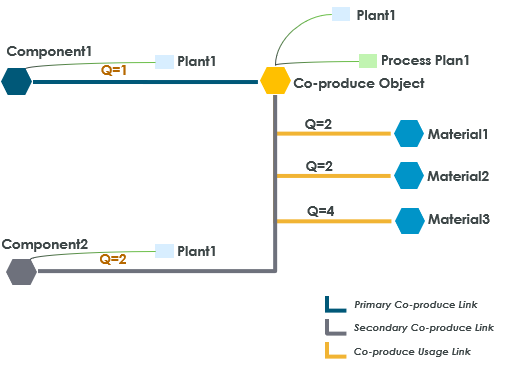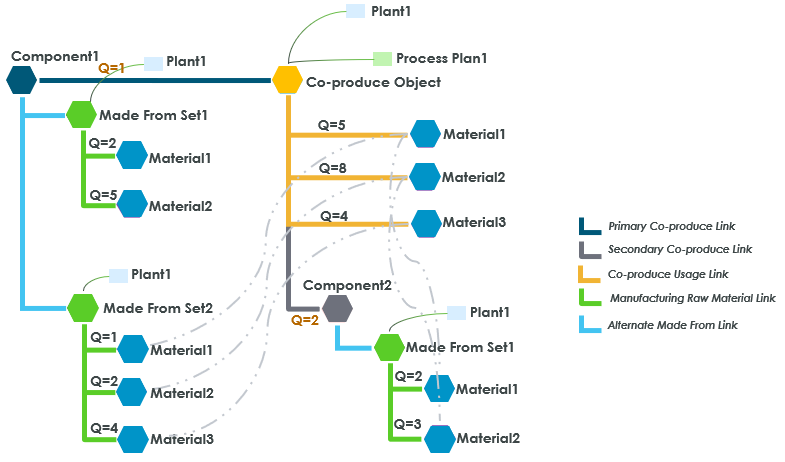Co-produce Structure
The co-produce structure depends on the configuration set for the property com.ptc.windchill.mpml.coproduce.manageIndependentCoproduce. The property is located at WT_Home/codebase/com/ptc/windchill/mpml/xconfs/mpmlink.wt.properties.xconf. Out of the box, the property is set to true.
When set to true, the Made From part usages of the primary and secondary parts are not automatically added to the co-produce structure when creating a co-produce object. You need to manually add the usages to the structure.
When set to false, the Made From part usages are automatically added to the co-produce structure when creating the co-produce object.
The following examples illustrate the structure of a co-produce object along with its associations with primary and secondary parts for different property values.
Property set to true

In the example, Component1, as the primary part, and Component2, as the secondary part, form a co-produce object. Material1, Material2, and Material3 form the usages of the co-produce object.
The primary co-produce link, secondary co-produce link, and co-produce usage links show the quantity of the primary part, secondary part, and Made From parts required to produce the co-produce object.
Property set to false

In the example, Component1 can be produced using the Made From parts under Made From Set1 or Made From Set2. Similarly, Component2 is produced using the Made From parts under Made From Set1. Both the components have common Made From parts, Material1 and Material2. So Component1, as the primary part, and Component2, as the secondary part, form a co-produce object. The Made From parts under these Made From Sets form the usages of the co-produce object.
Each Manufacturing Raw Material Link shows the quantity of the Made From part required to create a Made From Set. Similarly, each Primary Co-produce Link and Secondary Co-produce Link show the quantity of the primary part and secondary parts required to produce the co-produce object. The quantity on each Co-produce Usage Link is calculated as the sum of the respective usage consumed by the primary and secondary parts. In this example, 1 quantity of Material1 is consumed to create Made From Set 2 for Component1, and 1 quantity of Component1 is consumed to create the co-produce object. Similarly, 2 quantities of Material1 are consumed to create Made From Set 1 for Component2, and 2 quantities of Component2 are consumed to create the co-produce object. In total, the co-produce object consumes 5 quantities of Material1: 1 quantity from Component1 and 4 quantities from Component2.